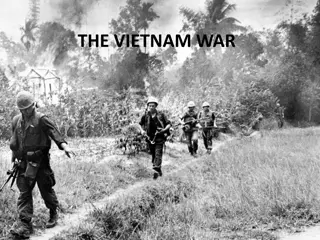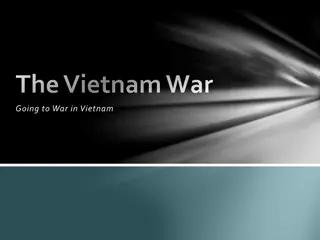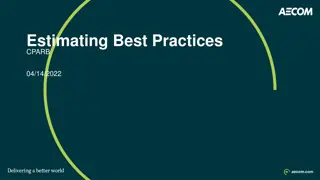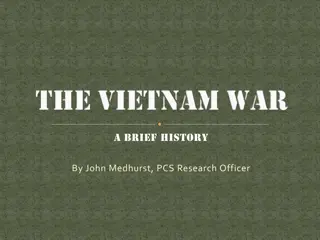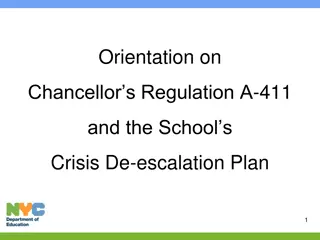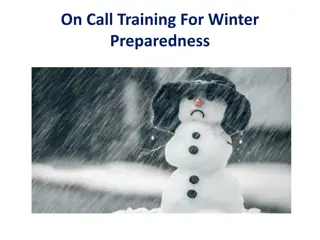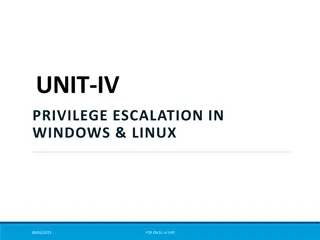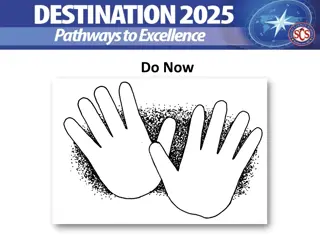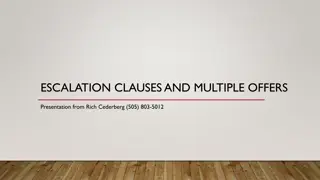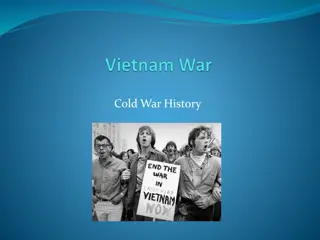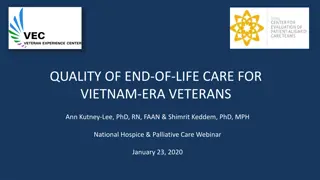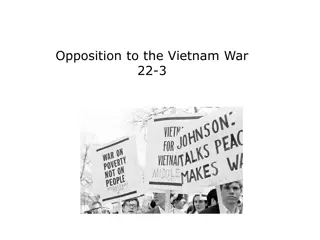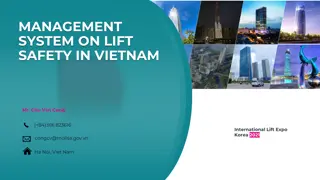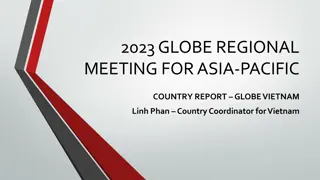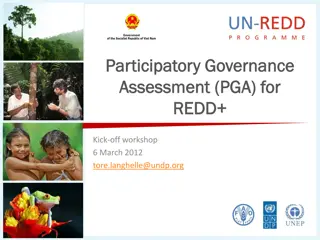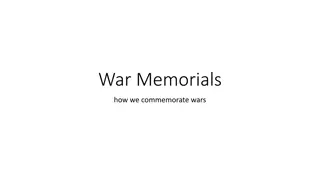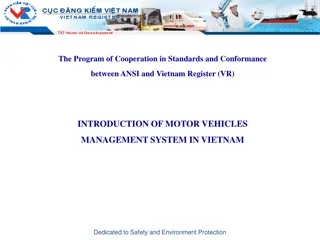The Americanization of the Vietnam War: Escalation and Challenges
In February 1965, President Johnson escalated U.S. involvement in the Vietnam War through Operation Rolling Thunder, intensifying bombing campaigns and increasing troop commitments. This shift in strategy, driven by American assumptions and General Westmoreland's counsel, aimed to Americanize the war effort. However, the elusive and determined Vietcong enemy posed significant challenges, resorting to guerrilla tactics and underground warfare. Despite heavy airstrikes and troop deployments, the war became costly and frustrating for the U.S., leading to mounting casualties and a prolonged stalemate.
Download Presentation

Please find below an Image/Link to download the presentation.
The content on the website is provided AS IS for your information and personal use only. It may not be sold, licensed, or shared on other websites without obtaining consent from the author. Download presentation by click this link. If you encounter any issues during the download, it is possible that the publisher has removed the file from their server.
E N D
Presentation Transcript
Americanizing the War In February 1965, Johnson dramatically altered the U.S. role in the Vietnam War. In response to a Vietcong attack that killed American troops at Pleiku, Johnson ordered the start of Operation Rolling Thunder. A sustained bombing campaign of North Vietnam. Johnson hoped that this intensive bombing would stop North Vietnam from reinforcing the Vietcong in South Vietnam and force them to seek a peace treaty. American ground forces took on heavy responsibility fighting the war while the South Vietnamese army took a secondary role.
American Assumptions and Strategies Johnson s change in strategy in 1965, stemmed primarily from the counsel of Secretary of Defense Robert McNamara and General William Westmoreland, the American commander in South Vietnam. The two thought that the U.S. needed to increase its military presence in Vietnam and do more of the fighting in order to win the war which was called Americanization. Operation Rolling Thunder had increased troop commitments and fulfilled the need to Americanize the war effort.
Beginning in March 1965, U.S. airstrikes hammered North Vietnam and Vietcong strong holds in South Vietnam. Between 1965 and 1973, American pilots dropped more than 6 million tons of bombs on enemy positions (Three times more than dropped by all sides in WWII). American pilots dropped jellied gasoline called Napalm that started fires in larges acreage of the Jungles in Vietnam. Agent Orange was sprayed to kill the heavy jungle vegetation and to destroy the Communist food supply. With more airstrikes, more American troops were sent.
An Elusive and Determined Enemy American soldiers generally fought lightly armed Vietcong guerrillas in small engagements and not in large battles. Vietcong dug tunnels to hide from American bombing raids and set booby traps to injure and cripple American troops. Ho Chi Minh s military doctrine hinged on fighting only when victory was assured, which meant never fighting in the opponent s terms. The strategy was to wear out the American troops like the American colonists used against the British. The leaders of North Vietnam and the Vietcong remained convinced that if they could avoid losing the war, the Americans would eventually leave.
A Costly and Frustrating War American strategy yielded limited results. More American casualties occurred. By the end of 1965, there were 184,300 U.S. Troops in Vietnam and 636 American soldiers had died in the war. Three years later, there were more than half a million U.S. troops with 30,000 American troops killed. Although American forces won the larger battles, it could not decisively win the war and devolved into a stalemate. The U.S. wanted to establish a stable South Vietnamese government and win the hearts and minds of their citizens. But the South Vietnamese government was corrupt and the Americans were not popular outside the cities.
Patriotism, Heroism, and Sinking Morale Unlike other wars, the Vietnam War did not emphasize territorial acquisition. The U.S. and its allies did not invade North Vietnam, march on Ho Chi Minh s capital of Hanoi, or attempt to destroy the communist regime. As in the Korean War, the U.S. was fearful of triggering both Chinese and Soviet entry into the conflict. Instead, American forces supported the survival and development of South Vietnam which was besieged by the Vietcong and their North Vietnamese allies. In this fight, the U.S. troops could never fully tell who were their friends from their enemies.
Danger on a New Battlefield U.S. forces often had no alternative but to fight indecisive battles in the jungles and rice paddies of Vietnam. Vietcong would sneak under the foliage often in night conducting hit and run attacks. Much of the fighting took place at night which reduced the effectiveness of American planes, artillery, and troop tactics. The Vietcong knew the land which gave them the advantage.
American Soldiers Fulfill Their Duty Most Americans who fought in Vietnam fought bravely and with courage. More than 55,000 gave their lives. Some 10,000 American women served in the war as nurses.
Morale Declines as War Wears On As the war lengthened, many Americans began to question U.S. involvement. By the end of 1965 most American soldiers in Vietnam had been drafted into the military. They sensed that the South Vietnamese people were indifferent if not openly hostile to their own nation. It seemed that Americans were dying to defend a nation whose people were unwilling to die or defend themselves.
The War Weakens the Economy The cost of the war coupled with the government spending on the Great Society Programs to eliminate poverty and improve education and healthcare led to rising prices and inflation. Although unemployment was down it forced Johnson to raise taxes and to cut back on the Great Society reform initiatives, with funds redirected for the war.
Antiwar Movement begins to Emerge America began to divide as the war grew longer, as more and more lives were lost. Widespread support turned to a division into hawks and doves. The mostly conservative hawks supported Johnson s war policy believing strongly in the containment of Communism and the domino theory. For hawks Vietnam was the crucial front in the Cold War. Doves broke with Johnson s war policy. A diverse group of liberal politicians, pacifists, student radicals and civil rights leaders questioned the war on both moral and strategic grounds. For them the conflict was a localized civil war and not a vital Cold War battleground. Senator J. William Fulbright chairman of the Senate Foreign Relations Committee emerged as the early leaders of the doves; led opposition against the War.


